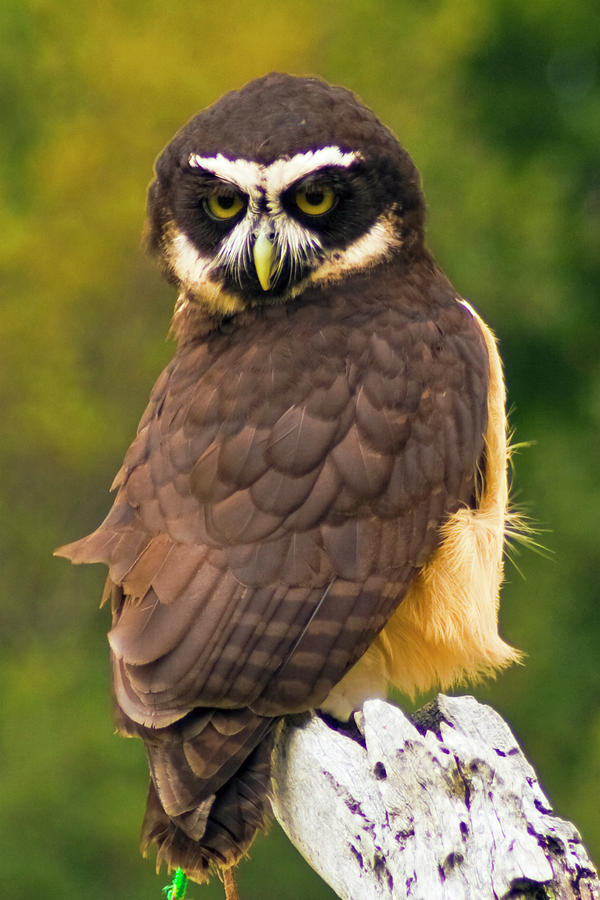
Spectacled owls, along with two other species, belong to the genus Pulsatrix, which is part of the family Strigidae or “typical” owls. The owls in the genus Pulsatrix are large, have stout beaks, strong feet and dark faces outlined by light feathers. The range of the spectacled owl reaches from southern Mexico, south to Paraguay, southern Brazil and northern Argentina. They occupy a variety of habitats from thick, humid rain forests and mangroves, to open woodlands. Spectacled owls have been observed at elevations up to 4,000 feet (1,220 m), but they predominately live at lower elevations. The spectacled owl stands approximately 17-19 inches (43-48 cm) tall and weighs 21-33 ounces (590-950 g). As with most raptors, the female is larger than the male. These large owls have dark heads and backs and buff-colored fronts. They have no ear-tufts. Spectacled owls have an unmistakable face pattern. Light circles around their yellow eyes give them the appearance of wearing glasses or spectacles; this accounts for their name. Juveniles are even more striking, often called “white owls” by local populations. Juveniles have white heads and bodies, dark brown wings and brown to black facial masks. Nesting can occur from January to August. Spectacled owls are cavity nesters, seeking out holes in trees to nest. Clutch size is normally two white eggs, with incubation lasting about 36 days. Approximately six to eight weeks after they hatch, fledglings are ready to take their first flight. The spectacled owl has a variety of distinct calls in the wild. Both sexes utter a rapid series of about seven low-pitched, short, rattling hoots sounding like hoo-hoo-hoo-hoo-hoo-hoo-hoo. Some who have listened to this call have remarked that it sounds something like a woodpecker's tapping. Another call used during flight is a short “whistle” that sounds like wer, which is often repeated about every 10 seconds. When the spectacled owl is alarmed, it may produce three or four descending low hoots that sound something like a growl. Juveniles produce more of a raspy call, “kweew.” The spectacled owl appears to be especially vocal on moonlit nights.

No comments:
Post a Comment